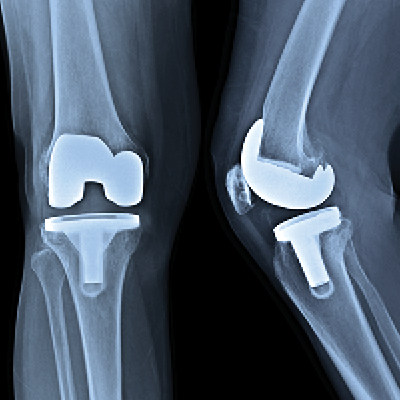Vitality eNews Sign Up
Receive the Summa Health eNewsletter for the latest health tips, advice and updates.
FAQ: Partial knee replacement surgery
Posted November 15, 2020 by Ryan A Combs, MD

If you’re like one in five Americans, you’ll eventually develop arthritis of the knee. This means the cartilage that cushions the bones of your knee begins to degrade, causing those bones to painfully rub together. When that pain becomes too much or restricts activities you once enjoyed, it’s time to talk to your doctor about treatment, including knee replacement surgery.
What’s the difference between a partial and a total knee replacement?
Sometimes arthritis affects the entire knee joint, but often it degrades just one area (the inside or outside of the knee or even just the kneecap). During total knee replacement surgery, the surgeon removes the damaged cartilage and bone from the entire knee joint, then replaces the joint with a metal and plastic prosthesis (implant).
In a partial knee replacement, only one surface of the joint is removed and replaced with a smaller implant. Roughly, about 15% of end-stage knee arthritis patients are good candidates for a partial knee replacement.
What is the advantage of a partial vs. total knee replacement?
A total knee replacement requires a larger incision and a bigger exposure. Because the surgeon must cut through more healthy tissue to access the knee, it requires a longer and more painful recovery.
A partial knee replacement requires a smaller incision, leaves surrounding tissue intact, and can take less time to perform. Most patients need only a nerve block with a sedative to help with relaxation during surgery. A partial knee replacement provides patients with improved function and range of motion versus a total knee. Patients tend to say that the partial knee replacement feels more “normal”, as well.
How long is the recovery time for a partial knee replacement?
You’ll be able to bear your full weight and walk as soon as the anesthetic wears off. If needed, you can use a cane or crutches. Most patients go home the same day. You’ll be encouraged to resume light activity right away.
Without complications, most people recover in six to eight weeks. This can vary significantly from patient to patient but in general, recovery can take about half the time compared to a total knee replacement. Your surgeon will prescribe physical therapy to improve your range of motion.
How much pain can I expect during my recovery?
You may experience some pain after surgery, but you’ll be prescribed medication to manage your symptoms. Talk to your surgeon if you’re concerned about taking narcotics. After you recover fully, the hope is to have significantly less pain and improved function compared to before surgery.
What complications could occur?
As with any surgery, there’s a risk of infection or blood clots. Since the remainder of the knee is left alone, there is the potential for advancement of arthritis in other compartments of the knee.
What kind of activities will I be able to do after recovery?
Your implant is designed for walking, not high-impact sports like running or basketball that involve pivoting or twisting. However, many patients can resume recreational tennis, cycling, swimming or golf. Your surgeon can tell you which activities are safe for you.
How long will my partial knee implant last?
About 95% of partial knee implants are still well functioning after 10 years (which compares favorably to results for a total knee replacement). If you should need surgery to replace your partial knee implant with a total knee replacement, it will require a shorter operation and yield better results than replacing a total knee implant.
Your Summa Health orthopedic team includes several board certified orthopedic surgeons. If you’d like to make an appointment, call 330.835.5533.

